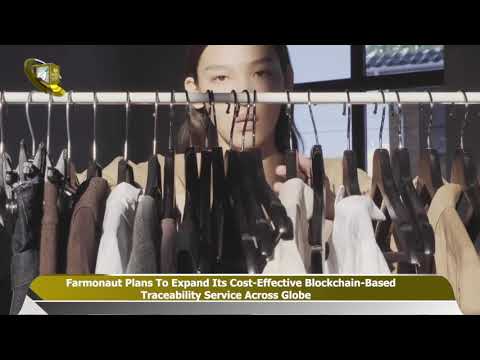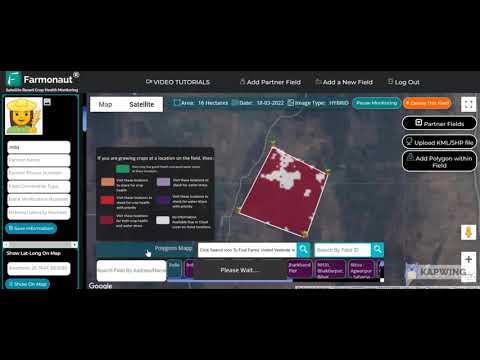EU Deforestation Regulation: How Satellite Monitoring and Blockchain Enhance Sustainable Forestry Practices
“Satellite monitoring and blockchain technology are revolutionizing forest health monitoring, impacting over 1 billion hectares of certified forests globally.”

In the ever-evolving landscape of sustainable forestry practices, the introduction of the EU Deforestation Regulation marks a significant milestone in our collective efforts to combat deforestation and promote responsible wood sourcing. As we delve into this comprehensive exploration of the regulation’s impact, we’ll uncover how cutting-edge technologies like satellite monitoring for forests and blockchain are reshaping the way we approach forest health monitoring and certification standards.
The forestry sector is undergoing a profound transformation, driven by the urgent need to address climate change and preserve our planet’s vital ecosystems. In this blog post, we’ll examine the challenges and opportunities presented by the EU Deforestation Regulation, with a particular focus on how it’s revolutionizing wood supply chain transparency and enhancing sustainable wood certification processes.
The EU Deforestation Regulation: A Game-Changer for Sustainable Forestry
The EU Deforestation Regulation represents a landmark shift in how we approach forest conservation and sustainable wood sourcing. This new policy framework aims to minimize the EU’s impact on global deforestation by imposing strict requirements on wood products entering the European market. Here are some key aspects of the regulation:
- Mandatory due diligence for operators importing wood products
- Enhanced traceability requirements throughout the supply chain
- Stricter verification processes for deforestation-free products
- Increased focus on sustainable forestry practices and certification
As forest managers and wood product industries adapt to these new regulatory requirements, we’re witnessing a surge in innovative solutions designed to meet the challenges head-on. At the forefront of this technological revolution are satellite monitoring systems and blockchain technology, which are proving instrumental in enhancing forest health monitoring and supply chain transparency.
Satellite Monitoring: A Bird’s-Eye View of Forest Health
Satellite monitoring for forests has emerged as a game-changing tool in our arsenal for sustainable forestry practices. By leveraging advanced Earth observation technologies, we can now monitor vast forest areas with unprecedented accuracy and frequency. Here’s how satellite monitoring is transforming forest management:
- Real-time detection of deforestation and forest degradation
- Improved accuracy in forest inventory assessments
- Enhanced ability to track reforestation efforts
- Early warning systems for forest fires and pest outbreaks
One company at the forefront of this technological revolution is Farmonaut. While primarily focused on agricultural applications, their satellite-based monitoring solutions offer valuable insights that can be applied to forestry management as well. Farmonaut’s web app provides a user-friendly interface for accessing satellite data, which could be adapted for forest monitoring purposes.
The integration of satellite monitoring into forest certification standards is proving to be a powerful tool for verifying compliance with sustainable forestry practices. By providing an objective, data-driven approach to forest management, satellite monitoring enhances the credibility and integrity of forest certification systems.
Blockchain Technology: Revolutionizing Wood Supply Chain Transparency
Blockchain technology is another innovative solution that’s making waves in the forestry sector. By creating an immutable, decentralized ledger of transactions, blockchain offers unprecedented levels of transparency and traceability in wood supply chains. Here’s how blockchain is enhancing sustainable wood certification:
- Secure and transparent tracking of wood products from forest to consumer
- Improved verification of deforestation-free products
- Enhanced trust and credibility in certification processes
- Streamlined auditing and compliance procedures
While Farmonaut’s primary focus is on agricultural applications, their experience with blockchain-based traceability solutions in the textile industry demonstrates the potential for similar applications in forestry. Farmonaut’s API could potentially be adapted to integrate blockchain technology into existing forest management systems, further enhancing transparency and traceability in wood supply chains.
“The EU Deforestation Regulation affects wood supply chains across 27 member states, reshaping sustainable forestry practices for millions of hectares.”
Challenges in Verifying Deforestation-Free Products
While the EU Deforestation Regulation sets ambitious goals for sustainable wood sourcing, it also presents significant challenges for forest managers and wood product industries. Verifying that products are truly deforestation-free requires robust systems and processes. Some of the key challenges include:
- Complexity of global supply chains
- Limited visibility into sub-supplier practices
- Difficulty in tracking wood products across borders
- Varying standards and definitions of “deforestation-free”
To address these challenges, forest certification systems are evolving to incorporate more advanced data analysis and technology-driven processes. This is where solutions like those offered by Farmonaut could play a crucial role. While not specifically designed for forestry, Farmonaut’s API developer docs provide insights into how satellite data and AI-driven analytics can be leveraged to enhance monitoring and verification processes.
Maintaining Certification Integrity in a Changing Landscape
As forest certification standards adapt to meet the requirements of the EU Deforestation Regulation, maintaining the integrity of these certifications becomes paramount. This involves striking a balance between rigorous verification processes and practical implementation. Key considerations include:
- Ensuring consistency across different certification schemes
- Adapting certification criteria to align with new regulatory requirements
- Incorporating technology-driven verification methods
- Balancing the needs of forest managers, industry, and environmental protection
Forest certification organizations are rising to this challenge by embracing innovation and collaboration. By leveraging technologies like satellite monitoring and blockchain, these organizations are enhancing the credibility and effectiveness of their certification processes.

Innovative Solutions for Sustainable Wood Certification
The confluence of regulatory pressure and technological advancement is spurring the development of innovative solutions for sustainable wood certification. These solutions are designed to enhance the accuracy, efficiency, and credibility of certification processes. Some notable innovations include:
- AI-powered image analysis for detecting forest changes
- IoT sensors for real-time monitoring of forest conditions
- Mobile apps for field data collection and verification
- Integrated platforms combining satellite data, blockchain, and AI analytics
While Farmonaut’s focus is primarily on agriculture, their innovative approach to combining satellite data, AI, and blockchain technology offers valuable insights for the forestry sector. The company’s mobile apps for Android and iOS demonstrate how user-friendly interfaces can make complex data accessible to field practitioners.
Adapting to New Regulatory Requirements
The implementation of the EU Deforestation Regulation requires significant adaptation from forest managers and wood product industries. This adaptation process involves several key steps:
- Conducting thorough risk assessments of supply chains
- Implementing enhanced due diligence procedures
- Investing in technology and training for improved monitoring and reporting
- Collaborating with certification bodies to ensure compliance
As organizations navigate these changes, they’re finding that technology can be a powerful ally. Tools like satellite monitoring and blockchain not only aid in compliance but can also drive operational efficiencies and open new market opportunities.
The Role of Forest Certification Systems in Ensuring Compliance
Forest certification systems play a crucial role in helping organizations comply with the EU Deforestation Regulation. These systems provide a framework for sustainable forest management and responsible sourcing practices. Key functions of forest certification systems include:
- Setting standards for sustainable forest management
- Conducting regular audits and assessments
- Providing a chain of custody certification for wood products
- Promoting continuous improvement in forestry practices
As these systems evolve to meet new regulatory requirements, they’re increasingly incorporating advanced technologies to enhance their effectiveness. This technological integration is creating new opportunities for innovation in the forestry sector.
Supporting Local Communities Through Sustainable Forestry
An often-overlooked aspect of sustainable forestry practices is their impact on local communities. The EU Deforestation Regulation recognizes the importance of supporting these communities as part of a holistic approach to forest conservation. Key considerations include:
- Protecting the rights and livelihoods of forest-dependent communities
- Promoting sustainable economic opportunities in forested areas
- Engaging local communities in forest management decisions
- Preserving traditional knowledge and cultural practices related to forests
Forest certification systems are increasingly incorporating community support initiatives into their standards, recognizing that sustainable forestry goes hand-in-hand with social responsibility.
Comparison of Forest Certification Systems
| Certification System Name | Geographic Coverage | Satellite Monitoring Integration | Blockchain Technology Adoption | Deforestation-Free Product Verification Methods | Supply Chain Transparency Score (1-10) | Community Support Initiatives | Alignment with EU Deforestation Regulation |
|---|---|---|---|---|---|---|---|
| FSC (Forest Stewardship Council) | Global | High | Medium | On-site audits, satellite monitoring, traceability systems | 9 | Community forestry programs, indigenous rights protection | High |
| PEFC (Programme for the Endorsement of Forest Certification) | Global | Medium | Low | Third-party audits, chain of custody certification | 8 | Local stakeholder engagement, rural development projects | Medium |
| SFI (Sustainable Forestry Initiative) | North America | Medium | Low | Annual audits, fiber sourcing requirements | 7 | Conservation grants, education programs | Medium |
| MTCC (Malaysian Timber Certification Council) | Malaysia | High | Medium | Mandatory legality verification, satellite monitoring | 8 | Indigenous community consultation, local employment initiatives | High |
| ATFS (American Tree Farm System) | United States | Low | Low | On-site inspections, management plan reviews | 6 | Family forest support, landowner education | Low |
The Future of Sustainable Forestry Practices
As we look to the future, it’s clear that sustainable forestry practices will continue to evolve, driven by regulatory pressures, technological advancements, and growing environmental awareness. Key trends to watch include:
- Increased integration of AI and machine learning in forest management
- Development of more sophisticated traceability systems
- Greater emphasis on biodiversity conservation and ecosystem services
- Expansion of carbon markets and forest-based climate solutions
The EU Deforestation Regulation is just the beginning of a global shift towards more stringent environmental standards in forestry and wood products. As this trend continues, we can expect to see further innovations in sustainable forestry practices and certification systems.
Conclusion: Embracing Innovation for a Sustainable Future
The EU Deforestation Regulation represents a significant step forward in our collective efforts to combat deforestation and promote sustainable forestry practices. By leveraging cutting-edge technologies like satellite monitoring and blockchain, we’re enhancing our ability to verify deforestation-free products, improve supply chain transparency, and maintain the integrity of forest certification systems.
As we navigate this changing landscape, it’s clear that innovation will play a crucial role in meeting the challenges ahead. Companies like Farmonaut, while not directly involved in forestry, demonstrate the potential for technology to revolutionize natural resource management. Their solutions in agricultural satellite monitoring and blockchain-based traceability offer valuable insights that could be adapted to support sustainable forestry practices.
The future of forestry lies in our ability to balance environmental stewardship with economic needs, leveraging technology to create more efficient, transparent, and sustainable wood supply chains. By embracing these innovations and continuing to evolve our approaches to forest management and certification, we can work towards a future where our forests thrive, local communities prosper, and wood products are sourced responsibly.
FAQ Section
Q: What is the EU Deforestation Regulation?
A: The EU Deforestation Regulation is a policy framework aimed at minimizing the EU’s impact on global deforestation by imposing strict requirements on wood products entering the European market. It mandates due diligence for operators, enhances traceability requirements, and focuses on promoting sustainable forestry practices.
Q: How does satellite monitoring enhance sustainable forestry practices?
A: Satellite monitoring provides real-time detection of deforestation and forest degradation, improves accuracy in forest inventory assessments, enhances tracking of reforestation efforts, and offers early warning systems for forest fires and pest outbreaks. This technology enables more effective and data-driven forest management.
Q: What role does blockchain play in wood supply chain transparency?
A: Blockchain technology creates an immutable, decentralized ledger of transactions, offering unprecedented levels of transparency and traceability in wood supply chains. It enables secure tracking of wood products from forest to consumer, improves verification of deforestation-free products, and enhances trust in certification processes.
Q: How are forest certification systems adapting to the EU Deforestation Regulation?
A: Forest certification systems are incorporating more advanced data analysis and technology-driven processes. They’re adapting their criteria to align with new regulatory requirements, integrating satellite monitoring and blockchain technology, and balancing the needs of forest managers, industry, and environmental protection.
Q: What are some challenges in verifying deforestation-free products?
A: Key challenges include the complexity of global supply chains, limited visibility into sub-supplier practices, difficulty in tracking wood products across borders, and varying standards and definitions of “deforestation-free”. These challenges are being addressed through technological innovations and improved certification processes.






